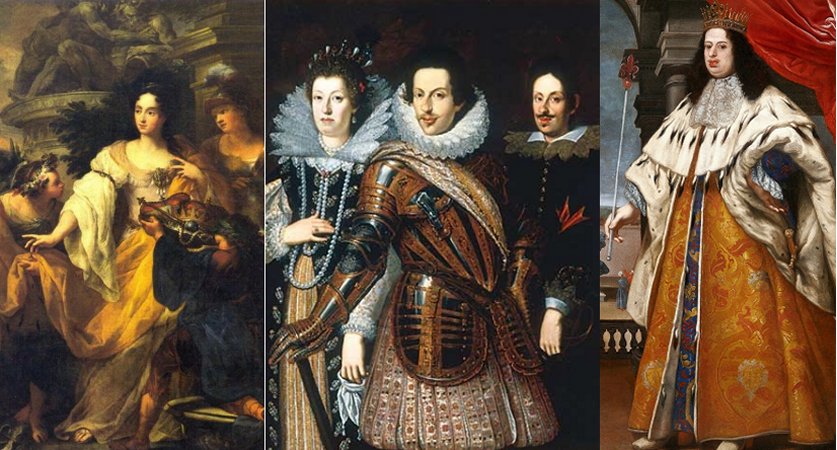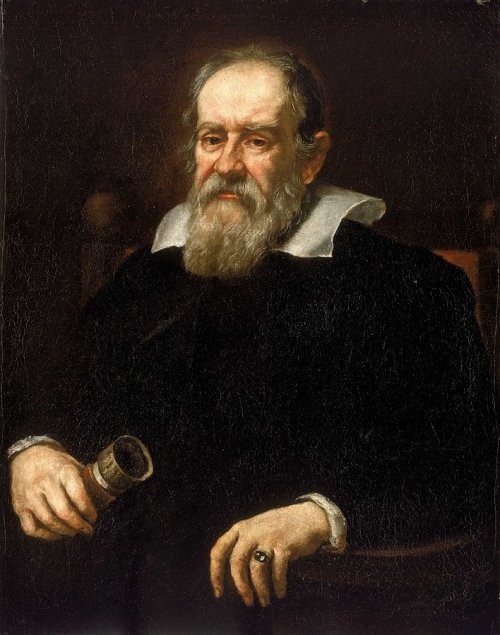Medici Family – Powerful Renaissance Godfathers And Patrons Of Galileo Galilei
David Tee - AncientPages.com - The term Renaissance Godfathers describes the Medici family well.
The fact that the Medici family were bankers at heart, gave them access to untold resources which they used to obtain civic power over the city of Florence. As history tells us, they were not the only famous or powerful family of the Renaissance era, but they lasted the longest and ruled Florence for roughly 250 years.
Left: Anna Maria Luisa de' Medici, the last of the Grand Ducal line, in Minerva, Merkur und Plutus huldigen der Kurfürstin Anna Maria Luisa de' Medici (English: Minerva, Mercury and Pluto pay homage to the Electress Anna Maria Luisa de' Medici) after Antonio Bellucci, 1706- Credit: Public Domain
Middle: The Grand Duchess Maria Maddalena, The Grand Duke Cosimo II, and their elder son, the future Ferdinando II. Credit: Public Domain Right: Cosimo III, the Medicean grand duke, in Grand Ducal regalia. Credit: Public Domain
The Albizzi family were far more powerful and richer than the Medici but they preferred war to governing and were soon ousted for their war efforts. Luca Albizzi married a cousin of the Medici family which helped bring the riches and political power of the Albizzi’s to an end.
Other families that became enemies of the Medici’s were the Pazzi and the Borgia. Both families made accusations and treacherous acts against the Medici family and all failed to be successful. They fell into ruin not long after their failures.
Treachery And Corruption Follow The House Of Medici
Even though the original head of the powerful Medici family, Cosimo, was sentenced to 10 years of exile for trying to stifle Florentine freedom, the richest man in Europe at that time used bribery and well-connected friends to keep him alive.
He also used his wealth to discreetly control Florentine life, often using money as a way to ruin opponents.
Cosimo’s Heirs
The grandsons of Cosimo did not rule long but they ruled as out and out tyrants. After Giuliano was killed, Lorenzo turned the Florentines against the Medici family with his very wild lifestyle. Although these two men supported the arts and promoted the works of Michelangelo and other famous artists, that work did not spare them the wrath of the citizens of the city of Florence.
But it was Lorenzo’s son, Piero, who brought a temporary halt to Medici rule when he accepted harsh peace terms from the French after their invasion. Piero was forced out of the city and died in exile.
Portrait of Galileo Galilei (1636), by Justus Sustermans - Credit: Public Domain
It wasn’t until the Spanish defeated the French and forced the Florentine leaders to accept Medici rule, that the Medici family returned to prominence and power. The new Medici rulers were like their forefathers. Politically ruthless but great supporters of the arts.
The Medici’s And The Roman Catholic Church
At that time the Roman Catholic Church (RCC) was very powerful. There were few churches if they were allowed to exist, who could rival the RCC. This means that like most other families the Medici’s were staunch RCC adherents.
In fact, 4 members of the Medici family went on to become Pope. Giovani, 1475 to 1521, was Pope Leo X. Giulio di Giuliano, 1478- 1534, was Pope Clement VII. Then, Giovanni Angelo, 1499 to 1565, was Pope Pius IV and Alessandro Ottaviano, 1535 to 1605, had the shortest reign as pope. He did not last even a year.
Medici family members placed allegorically in the entourage of a king from the Three Wise Men in the Tuscan countryside in a Benozzo Gozzoli fresco, c. 1459. Credit: Public Domain
Those were not the only family members to reach high heights religiously or politically. Piero’s daughter, Catherine de Medici, married Henry II of France and 3 of her sons would replace their father on the throne. Maria married Henry IV and her daughters went on to become Queens of Spain and England.
The Medici family were patrons of the famous Galileo Galilei, who tutored several generations of Medici children.
Unfortunately for Galileo, the Medici family was not as strong as the leaders of the Inquisition and they failed to protect him when Galileo was arrested.
The Decline Of The Medici Power
It may be said that when Ferdinand II came to power, the influence of the Grand Duchesses may not have prepared him to rule as well as he should have. He was 10 when he became a Grand Duke and when he was old enough he took over for his father.
He was in charge of Tuscany and Florence at the time of the Plaque and Galileo’s problems. While Ferdinand led well throughout the plague crisis, it was not enough to grant him the power to protect Galileo.
This lack of leadership and power was passed down to his son and grandson. The son was religiously intolerant and very incompetent while his grandson did not rule long enough to alter the decline.
It was in 1735 that the Medici’s lost control of Florence and Tuscany forever. The European powers at the time took over, giving France Lorraine and Austria Tuscany. Austria sent troops to occupy Tuscany and Florence in 1737.
Written by – David Tee AncientPages.com
Copyright © AncientPages.com All rights reserved. This material may not be published, broadcast, rewritten or redistributed in whole or part without the express written permission of AncientPages.com
Expand for referencesMore From Ancient Pages
-
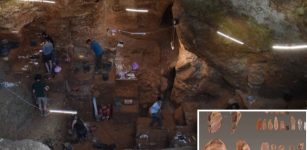 Stone Tools In Lapa do Picareiro Cave Reveal Modern Humans Reached Western Parts Of Europe 5,000 Years Earlier Than Previously Thought
Archaeology | Sep 30, 2020
Stone Tools In Lapa do Picareiro Cave Reveal Modern Humans Reached Western Parts Of Europe 5,000 Years Earlier Than Previously Thought
Archaeology | Sep 30, 2020 -
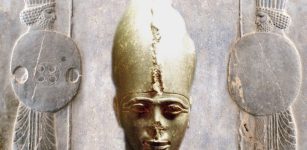 Pharaoh Psamtik III’s Deadly Encounter With Cambyses II Of Persia Ended The 26th Dynasty Of Egypt
Featured Stories | Apr 16, 2021
Pharaoh Psamtik III’s Deadly Encounter With Cambyses II Of Persia Ended The 26th Dynasty Of Egypt
Featured Stories | Apr 16, 2021 -
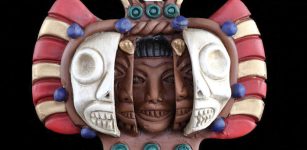 Supay: God Of Death And Underworld And Ruler Over Race Of Demons According To Inca Beliefs
Featured Stories | Jun 7, 2020
Supay: God Of Death And Underworld And Ruler Over Race Of Demons According To Inca Beliefs
Featured Stories | Jun 7, 2020 -
 Mysterious Ancient Underground Chambers Beneath Jerusalem Baffle Archaeologists
Archaeology | Jul 6, 2020
Mysterious Ancient Underground Chambers Beneath Jerusalem Baffle Archaeologists
Archaeology | Jul 6, 2020 -
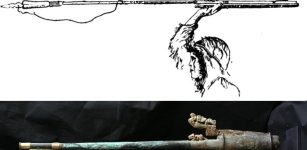 Atlatl Weapon Use By Prehistoric Females Equalized The Division Of Labor While Hunting – Study Shows
Archaeology | Aug 18, 2023
Atlatl Weapon Use By Prehistoric Females Equalized The Division Of Labor While Hunting – Study Shows
Archaeology | Aug 18, 2023 -
 Mysterious Handprint And Cry For Justice From Beyond The Grave
Featured Stories | Jan 2, 2020
Mysterious Handprint And Cry For Justice From Beyond The Grave
Featured Stories | Jan 2, 2020 -
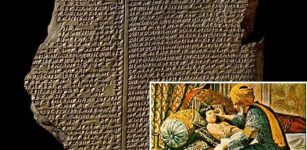 Clay Tablets Reveal Sumerian Doctors Treated Disease With Spells Of Magic And Medicine
Archaeology | Feb 13, 2018
Clay Tablets Reveal Sumerian Doctors Treated Disease With Spells Of Magic And Medicine
Archaeology | Feb 13, 2018 -
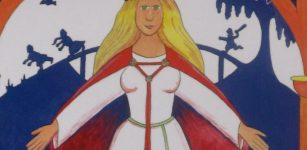 Lofn ‘Matchmaker’ – Norse Goddess Of Forbidden Marriages Of People Who Wish To Be Loved And Search For Partners
Featured Stories | Mar 25, 2021
Lofn ‘Matchmaker’ – Norse Goddess Of Forbidden Marriages Of People Who Wish To Be Loved And Search For Partners
Featured Stories | Mar 25, 2021 -
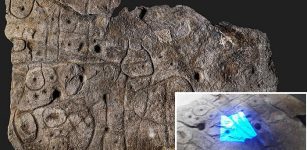 Large Bronze Age Stone May Be Europe’s Oldest 3D Map
Archaeology | Apr 8, 2021
Large Bronze Age Stone May Be Europe’s Oldest 3D Map
Archaeology | Apr 8, 2021 -
 Neolithic Boats At La Marmotta Reveal People Used Advanced Nautical Technology 7,000 Years Ago
Archaeology | Mar 22, 2024
Neolithic Boats At La Marmotta Reveal People Used Advanced Nautical Technology 7,000 Years Ago
Archaeology | Mar 22, 2024 -
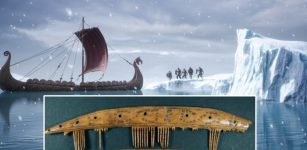 Vikings’ Long Distance Trade Reached The Arctic – Deer Antler Combs Reveal
Archaeology | Sep 19, 2023
Vikings’ Long Distance Trade Reached The Arctic – Deer Antler Combs Reveal
Archaeology | Sep 19, 2023 -
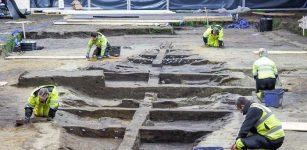 Reconstrucion Of The 19-Meter-Long Gjellestad Viking Ship In Progress
News | Oct 9, 2023
Reconstrucion Of The 19-Meter-Long Gjellestad Viking Ship In Progress
News | Oct 9, 2023 -
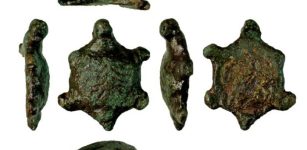 Roman Copper-Alloy Tortoise Figurine Discovered In Suffolk, UK
Archaeology | Dec 4, 2023
Roman Copper-Alloy Tortoise Figurine Discovered In Suffolk, UK
Archaeology | Dec 4, 2023 -
 On This Day In History: Eminent Scottish Inventor Graham Bell Born – On Mar 3, 1847
News | Mar 3, 2017
On This Day In History: Eminent Scottish Inventor Graham Bell Born – On Mar 3, 1847
News | Mar 3, 2017 -
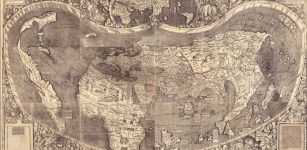 North America Is Named After An Italian Explorer
Ancient History Facts | Mar 1, 2016
North America Is Named After An Italian Explorer
Ancient History Facts | Mar 1, 2016 -
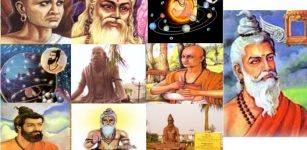 10 Remarkable Ancient Indian Sages Familiar With Advanced Technology And Science Long Before Modern Era
Featured Stories | Oct 19, 2015
10 Remarkable Ancient Indian Sages Familiar With Advanced Technology And Science Long Before Modern Era
Featured Stories | Oct 19, 2015 -
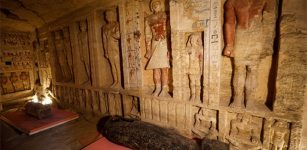 Collection Of 59 Well-Preserved 26th Dynasty Coffins Unearthed In Saqqara Necropolis, Egypt
Archaeology | Oct 4, 2020
Collection Of 59 Well-Preserved 26th Dynasty Coffins Unearthed In Saqqara Necropolis, Egypt
Archaeology | Oct 4, 2020 -
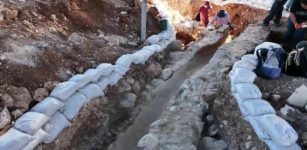 Massive Well-Preserved Second Temple-Era Aqueduct Unearthed In Jerusalem
Archaeology | Aug 29, 2023
Massive Well-Preserved Second Temple-Era Aqueduct Unearthed In Jerusalem
Archaeology | Aug 29, 2023 -
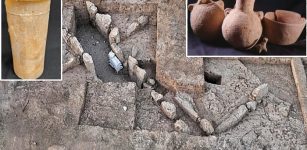 Ancient 5,500-Year-Old Gate Was Discovered Recently At Tell Erani, Near The Kiryat Gat Industrial Zone, Israel
Archaeology | Aug 17, 2023
Ancient 5,500-Year-Old Gate Was Discovered Recently At Tell Erani, Near The Kiryat Gat Industrial Zone, Israel
Archaeology | Aug 17, 2023 -
 Copper Artifacts Reveal Changing Connections In Prehistoric Europe
Archaeology | May 11, 2023
Copper Artifacts Reveal Changing Connections In Prehistoric Europe
Archaeology | May 11, 2023

